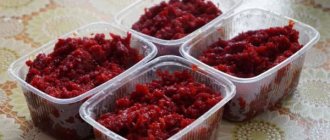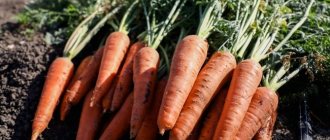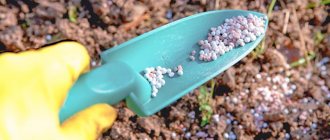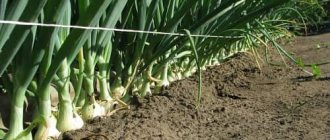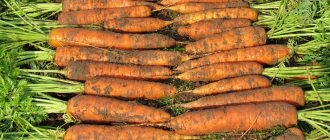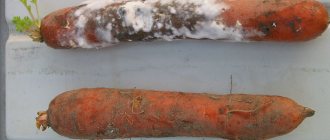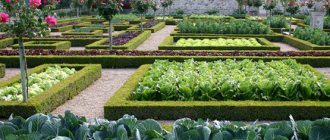Carrots are a common vegetable that, if stored properly, can last for many months. One of the methods of preserving the harvest is in sawdust.
To do this, you need to choose the right storage location, container and choose the sawdust itself.
We will tell you in the article whether it is possible to store and how to properly organize the storage of carrots for the winter in sawdust.
Advantages and disadvantages of the method
Storing carrots in sawdust has been a long-practiced method that ensures long-term storage of the vegetable.
Advantages of this method:
- long-term storage;
- reliable protection of root crops from diseases and infections;
- easy cleaning of carrots from sawdust after storage;
- simplicity of organization.
In addition to the undeniable advantages, the technique also has disadvantages:
- the need to have a lot of sawdust;
- each layer needs to be poured, which can be labor-intensive for large volumes of workpieces;
- sawdust tends to generate dust;
- sawdust can provoke allergies.
If the disadvantages of storing carrots in sawdust do not frighten you, then this method can be regarded as one of the best. In addition, even if there is no ready-made sawdust, you can make it yourself.
Preparatory stage
There are several simple rules for the preparatory stage that must be followed before storing this vegetable crop for long-term storage.
- The day before digging, the beds with carrots do not need to be watered.
- The tops are cut off immediately after harvesting, as they will draw moisture from the fruit.
- After cutting the tops, the crop is dried under the sun for 2-3 hours.
- For a week, root vegetables should be kept at a temperature of 10-14 degrees.
- Before harvesting for storage, carrots should be sorted again and unsuitable roots should be removed.
Attention: Carrots prepared for long-term storage must be firm, without signs of sprouting, not frostbitten and free from mechanical damage. High-quality root vegetables will be perfectly stored until spring.
Preparation
Proper storage of carrots in sawdust requires compliance with all the necessary conditions:
- Creating conditions in the storage.
- Selection of containers.
- Selection of sawdust.
- Proper cultivation and processing of carrots before planting.
Selection of containers
The duration of storage largely depends on the choice of container. The best option is a box designed for no more than 20 kg (better - 15-18 kg), and equipped with a lid. A wooden or cardboard one is suitable, which does not have significant gaps so that sawdust does not spill through them.
When planning the placement of crops in winter, the following conditions must be observed:
- containers should not be placed directly on the cellar floor - only on wooden podiums or shelves;
- the container should not be moved close to the walls of the cellar - it is necessary to leave a free space of at least 10 cm.
Sometimes a method is used to store carrots directly on shelves, without containers. In this case, sawdust will be poured directly onto the shelves. This option is less preferable and neat, and moreover, much more sawdust will be required than for putting it in boxes.
Type of wood for sawdust
Not just any sawdust is suitable for preserving carrots - you need coniferous ones, they are the ones that prevent the development of fungus and damage to the crop by diseases .
If sawdust is wet, it should be dried before use. The permissible moisture content of the chips is up to 12%.
High-quality storage of vegetables occurs thanks to the phytoncides contained in wood shavings.
Room
A convenient room for storing large quantities of carrots in sawdust is an equipped cellar. First, the remnants of last year's harvest should be removed from it and disinfected.
Suitable conditions for finding the root crop are the following:
- humidity – up to 95%;
- air temperature – in the range from -2ºС to +2ºС.
If there are no racks or podiums for placing boxes with supplies, they must be made in advance. Read more about carrot storage temperatures here.
How to prepare a vegetable?
For planting in winter, healthy, ripe root crops are selected, preferably late-ripening varieties adapted to the climatic conditions of the growing region.
From the entire volume of harvested vegetables, damaged ones, those with an uneven structure and other defects are rejected.
Before sending carrots for long-term storage, they must be prepared:
- Shake off the soil.
- Cut off the tops so that unnecessary greens do not absorb useful substances.
- Cut off the remaining head (by 10 mm) to avoid germination in the future.
- Trim the ponytails.
- Dry for three days.
It is better to give preference to medium-sized carrots with a canonical shape. Read about how to prepare carrots for storage here.
Carrots - varieties for storage
It is best to store ripe carrots, smooth and without cracks. The ripening period depends on both the variety and the growing region. If you live in a cold region - in Siberia or the Urals, then you are better off growing medium-ripening carrots, which last about 100 - 110 days.
Late-ripening varieties have a longer development period, more than 120 days, and in cold regions these carrots may simply not ripen to a state suitable for storage in winter.
There are specially bred varieties of carrots for winter storage:
Golden Autumn, Queen of Autumn, Monastic, Cascade, Narbonne, Flaccoro, Red Giant, Chantane, Valeria, Moscow Winter, Incomparable, Flacque. Any of them deserves to be grown in your garden.
If you cannot remember what type of carrots you planted, then it is better to navigate by the shape of the root crops. Medium-sized, conical root vegetables are best stored in winter. Round, short-fruited varieties are stored worse.
Queen of Autumn
Moscow winter
Carrot Nantes
How to store?
Procedure for adding vegetables:
- Place the box in its designated place.
- Spread sawdust in a layer of 20-50 mm.
- Place the carrots on the resulting “pillow” so that the vegetables do not touch each other.
- Add a layer of sawdust to completely cover all the carrots in the bottom row.
- Repeat alternating layers of carrots and sawdust until the top of the box.
- Cover the container with a lid.
The duration of storage of carrots in sawdust, if properly organized, can be until the next harvest.
Possible problems
If all organizational aspects are taken into account, the carrots meet all quality requirements and suitable sawdust is selected, storage should proceed without problems.
The following problems may arise with the storage of the workpiece:
| Problem | Cause of the problem | Solutions |
| Freezing | The room temperature dropped below -2ºС | Create additional insulation by covering boxes, for example, with felt |
| The appearance of fungus and rotting | Excess moisture in the soil in which the carrots grew | For storage, leave carrots grown in favorable conditions |
| The appearance of fungus and rotting | Using sawdust from diseased trees, using wet sawdust. | Choose high-quality dry sawdust |
| Carrot sprouting | Incorrect preparation of the root crops themselves for planting, too active air circulation | The air duct should not be excessive, and the carrots should be prepared according to all the rules |
During storage, the compatibility of the crops being stored should also be taken into account. Carrots, for example, can be stored near beets, but preferably not in the same container. And it should be separated from apples and cabbage, since such proximity negatively affects the keeping quality of vegetables.
You can learn about storing carrots and beets in the cellar here, and at home - here.
Beneficial features
Carrots are a popular vegetable that are very easy to grow. The culture belongs to biennial herbaceous plants of the celery family, reaches 30 cm. The root crop is eaten, although it was originally grown for its aromatic leaves and seeds. The culture was brought to Europe in the 10th-13th centuries and became firmly established in the food culture of Europeans. It is widespread on all continents, about 60 species are cultivated.
In addition to excellent taste, it is also a very healthy product. The content of vitamins B, PP, C, E, K makes this vegetable valuable and nutritious, and the carotene contained in carrots in the human body is converted into vitamin A, which is extremely important for the immune system, vision, lungs, and skin. In addition to vitamins, it contains minerals such as:
- potassium;
- iron;
- phosphorus;
- magnesium;
- cobalt;
- copper;
- chromium;
- zinc;
- fluorine;
- nickel.
The vegetable contains 1.3% proteins and 7% carbohydrates.
Watch a video about the beneficial properties of carrots:
Alternative methods
In addition to sawdust, other methods can be used to store carrots. Each of them has its own advantages and disadvantages.
Is it possible in polyethylene?
Carrots can be kept cool in plastic bags. Such packaging should not be tied tightly, as the vegetable releases carbon dioxide as it sits .
In a confined space, this will contribute to the spoilage of root crops. In this regard, it is necessary to arrange additional holes and place some ash inside to absorb moisture.
If you use polyethylene, the carrots will last for several months (3-4), but not until the next harvest.
Instead of sealed polyethylene, it is advisable to use woven polyethylene bags , which are used for sugar and other bulk products.
You can learn about the pros and cons of storing carrots in bags here.
Clay
The clay is diluted to the state of thick sour cream: left for 3 or 4 days to swell. During this time, the solution is stirred periodically.
Each carrot is coated in clay and dried before being stored in storage. Only completely dried root vegetables with a hardened outer clay layer should be stored.
This method is an effective storage option that allows the harvest to last up to a year, but the preparation process itself is very messy.
Moss
Carrots can be stored in moist moss in bins. This proximity allows the vegetable to lie for a long time due to the preservative properties of moss, which allows it to retain carbon dioxide.
Another plus is that moss is a lightweight material that does not put additional pressure on vegetables . The top of such storage is covered with a tarpaulin to prevent moisture evaporation.
If the cellar is damp, then moss will be preferable to storing supplies in sand.
Enameled cookware
Large enamel pots and buckets can also be used to store carrot supplies.
Prepared root vegetables are placed vertically in containers . Place a napkin on top and cover everything with a lid.
Onion and garlic peel
If you collect enough onion and garlic peels throughout the year, you can organize storage of carrots even until the next season.
To do this, use boxes in which vegetables are placed, generously sprinkling each layer with husks.
Sand
This method of storing carrots is one of the most popular and often used by gardeners. Its implementation allows you to leave root crops in good condition from six months to 9 months.
The sand should be damp, but not wet . If you have dry sand, you can increase its humidity as follows: add a liter of water to each bucket of sand and mix. Carrots are stored in layers, similar to storage in sawdust.
Brief characteristics of the vegetable
The root vegetable belongs to the Umbrella family. A distinctive feature is dissected (patterned) foliage. Carrots are divided into table and fodder. Breeders have bred more than 60 species of this crop, which are distinguished by their brightness of color, size, ripening period and splendor of the tops.
Carrots are on the list of the healthiest vegetables. The positive effect of root vegetables on the body is as follows:
- This is a natural source of provitamin A - the daily supply can be replenished by eating just 2 carrots.
- Beta-carotene (the same vitamin A) helps increase the protective properties of the immune system and has a positive effect on visual function.
- Fiber has a beneficial effect on regulating blood glucose levels and helps reduce fat.
- Potassium helps improve the functioning of the heart and blood vessels.
- Chlorine normalizes the water-salt balance, and phosphorus strengthens the skeletal system.
REFERENCE! Fresh root vegetables are low in calories and are a must-have product for weight loss. Carrots are an indispensable component of diets and proper nutrition. 100 g contains only 40 kcal.
Recommendations
During long-term storage, the safety of the crop is ensured by observing the conditions and following the following recommendations:
Vegetables are not washed before storing.- Even small cracks on the surface are a reason to reject the root crop.
- Small root crops are stored better in winter.
- Unsuitable sawdust can ruin the harvest.
- Storing collected vegetables in sawdust cannot serve as protection against rodents.
Which sawdust is better
How to preserve carrots in sawdust in winter to minimize fungal infection depends on the quality of the material used. Sawdust contains a high concentration of phytoncides, which inhibit germination.
Detailed instructions on how to store carrots in sawdust contain recommendations for preparing the material. For long-term storage, conditions must be created. The optimal temperature should be -2…+2°C, air humidity not higher than 95%.
Storage boxes need to be disinfected, coniferous sawdust should be placed on the bottom and carrots should be placed on them so that they do not touch each other. Containers with carrots should be placed on a shelf at a distance from the wall.
Before laying, it is recommended to clean the cellar and disinfect the room with lime mortar. In this case, you can keep the carrots in wood chips for a long time, ensuring that the beneficial properties of the root crops are preserved.
The answer to the question whether it is possible to store carrots in sawdust in the ground requires the use of an integrated approach and work technique. When using this technology, carrots are covered with sand, pine sawdust and onion peels to provide heat.
You can use a plastic bag to store vegetables
When using this method, it is important to choose the optimal volume. A large bag accumulates a lot of carbon dioxide, increases humidity, which can trigger the process of rotting
